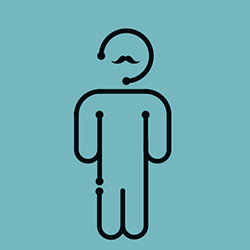Summary
Deaf and hard-of-hearing individuals face critical communication barriers in hospitals at all stages (from initial diagnosis through doctor appointments to picking up medication at the pharmacy and understanding how to take it) due to the lack of sign language interpretation services, which impacts the accuracy of diagnosis and the quality of treatment. A digital solution is needed to provide equitable access to healthcare services.
Target Users
User Journey

Salem, a 30-year-old deaf individual, visits a hospital for a medical consultation.
1
At reception, he struggles to explain his symptoms due to lack of interpreter support.
2
Salem uses a healthcare-specific app on his phone that connects him to a remote sign language interpreter.
3
Through a video call, the interpreter helps Salem communicate with the medical staff in real-time.
4
Salem receives appropriate medical care and feels understood and respected.
Potential Service Features
- Remote video interpretation on demand
- QR code at hospital entrance for immediate interpreter access
- Integration with hospital systems for appointment support
Touch Points
Issue Statement
Deaf and hard-of-hearing patients cannot access healthcare effectively due to the absence of qualified sign language interpreters, and the inability of medical staff to communicate with the patient due to their lack of even the minimum basic words in sign language.
Expected Key Benefits
Better health outcomes through accurate communication
Reduced patient stress
Increased patient satisfaction and inclusion
Training medical personnel on the minimum basics of sign language.
Implementation Analysis
Implementation Timeline
![]()
Short
Medium
Long
Technology Commercial Viability
![]()
Available Now
Viable in Short Term
Viable in Long Term
Investment Requirements
![]()
Low
Medium
High
Key Implementation Considerations
1
Confidentiality of medical information during video interpretation
2
Availability of interpreters across different dialects
3
Staff training to support the use of the tool
